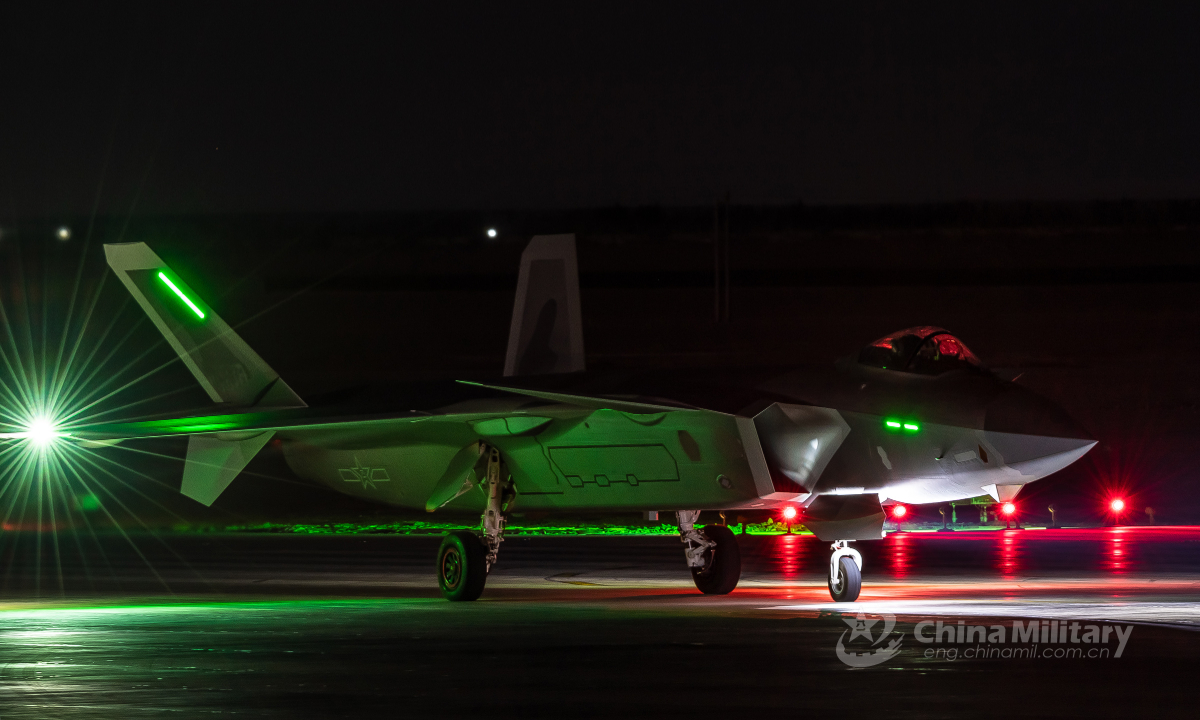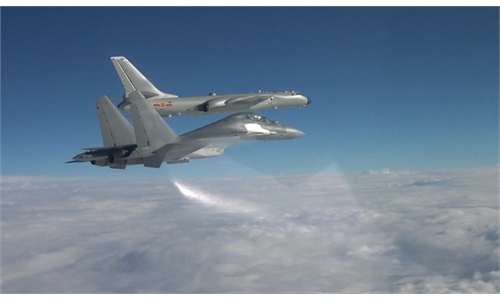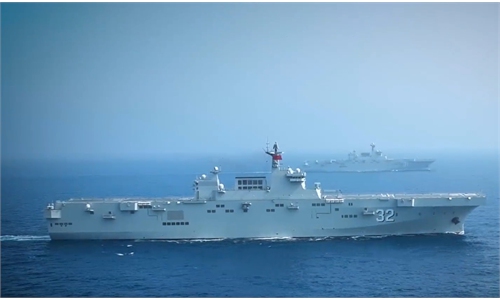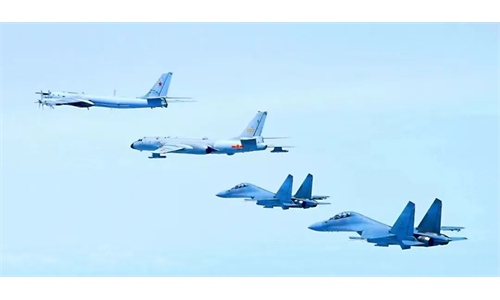
A J-20 fighter jet attached to a PLA air force base stands ready on the runway for the upcoming air combat training exercise involving multi-type fighter jets on May 17, 2022. (eng.chinamil.com.cn/Photo by Yang Jun)
The Chinese People's Liberation Army (PLA) Air Force is pursuing fast equipment development with the aim of adapting to future air combat, which could involve vastly expanded battlefield boundaries, highly dynamic games, greatly enhanced unmanned combat and main battle elements characterized by high altitude and fast speed, said an official recently.
Colonel Tang Shaojun at the PLA Air Force's equipment department made the remarks in an interview with the Xinhua News Agency's Outlook Weekly, which was reposted by the PLA Air Force's official WeChat account on Monday.
When asked about his thoughts on future air combat, the roles of air combat elements and the challenges in developing equipment, Tang said that to design weapons and equipment is to design future warfare, and the development of weapons and equipment is a key factor in the changing form of war, so it must be fundamentally oriented by the demands of combat.
Battlefield boundaries in future air combat will greatly expand to higher altitudes and farther distances, become full of highly dynamic games, stealth and anti-stealth, jamming and anti-jamming, spawning combat forms such as distributed kill, all-range attack and systematic combat, Tang said, noting that a hard kill will no longer be the only way to defeat an enemy.
Much more intelligent applications and unmanned combat will be seen, as they can rapidly complete the kill loop by focusing advantages in real time, Tang said.
Air combat elements with high altitudes and fast speeds can take advantage of wider area coverage, remote reach and flexible mobility and become the main combat forces in future air combat, as they can provide powerful support to future joint operations, Tang said.
"To better adapt to the forms of future warfare and air combat, the Air Force's equipment development will focus more on the balancing and optimization of the research and development system, and pursue more on fast iterations and rapid upgrades to equipment," Tang said.
Fu Qianshao, a Chinese military aviation expert, told the Global Times on Monday that since the world's aviation industries have recently saw longer development cycles and higher costs for warplanes, new aircraft are expected to use open structures with huge room for upgrades, so they can quickly enter service and gradually receive improvements as technology develops, so the air force can always maintain high combat capabilities.
With the development of aircraft platforms with faster speed and longer range carrying air-to-air missiles with very long ranges, future air combat could start hundreds of kilometers away and hit targets that are unreachable today, Fu said.
Detecting the enemy first and launching attacks first will likely become key in future combat, Fu said.
With the development of unmanned technology, drones are being developed to accompany manned aircraft in combat, which can lower the casualties of pilots and extend the scope of air combat by taking on the roles of force multipliers like early warning aircraft, tanker aircraft and electronic warfare aircraft, Fu said.
Giving his vision of equipment development in 2027, which marks the centennial of the PLA, Tang said that the PLA Air Force will design its equipment development from a top down level based on the strategic requirements of integrating air and space capabilities as well as coordinating offensive and defensive operations, speed up the development of equipment with high and new technology, and lay out and preset disruptive, cutting-edge technologies.
The PLA Air Force will strive to develop itself into a strong and modernized air force, as it will enhance its capabilities in perspectives including strategic early warning, air combat, air defense and anti-missile, information countermeasures, airborne combat, strategic delivery and comprehensive support, Tang said.
In the interview, Senior Colonel Wang Qingzhong from the PLA Air Force's staff department and Senior Colonel Yu Jun from the PLA Air Force's political work department also introduced the service's efforts in enhancing combat capabilities through personnel recruitment, talent cultivation and training.




